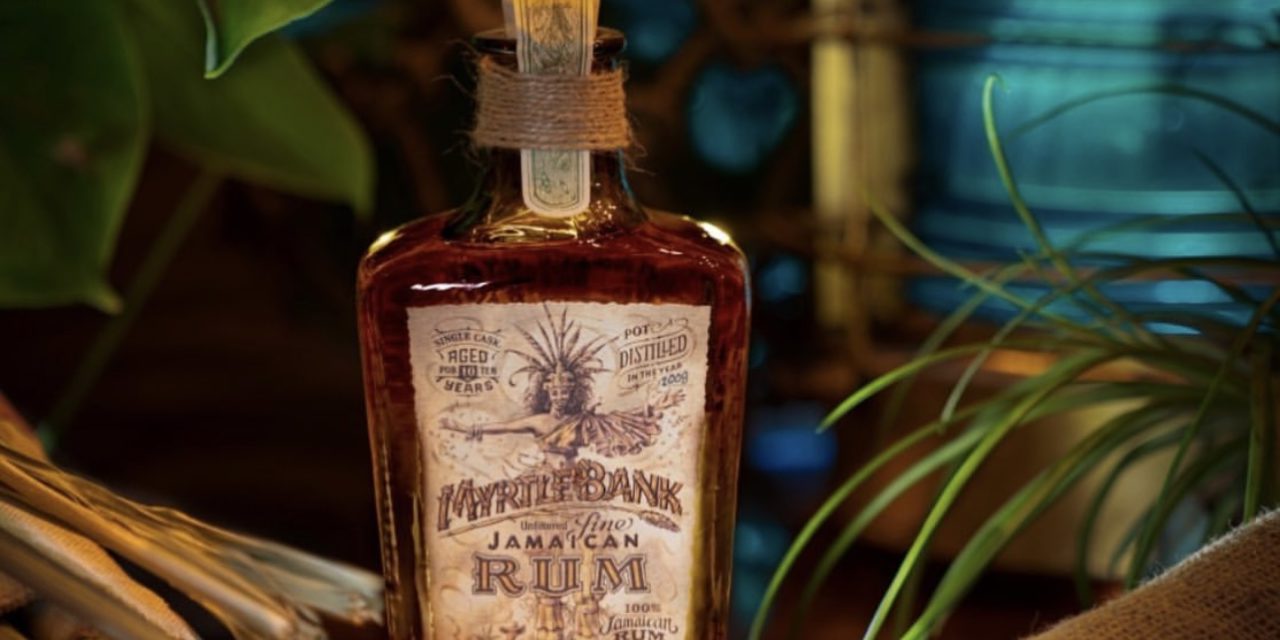The Myrtle Bank Hotel – situated in a district of Kingston Jamaica favored by a cooler micro climate, was initially sought out by travellers for it’s comforting respite from the heat. It was among the first to establish itself as a destination for well heeled travellers to the Caribbean, setting the pace and tone for other iconic properties in tropical regions and the experiences within them to follow: Trinidad’s Queen’s Park Hotel, Haiti’s Hotel Ollufson, and Singapore’s Long Bar at The Raffles Hotel. Like all these other destinations, the Myrtle Bank Hotel was famous for a signature drink.
Sadly, the hotel was the casualty of a fast moving fire in 1966 – an incident which made international headlines – and was not rebuilt. Meanwhile, it’s iconic drink keeps the hotel’s legacy alive.
The Myrtle Bank Punch almost single handedly introduced the rum punch to the world, and eventually, the tropical cocktail canon. It’s point of departure was high ester pot still rums – made in the style that made Jamaican Rum highly sought after by international consumers starting in the late 19th century – and tempering it with the addition of sugar, lime, and a liqueur, festooned with a fancy garnish inspired by the look of the Cobbler and Julep, drinks that were among the first to get international press in the mid 19th century. Like any enduring classic, it took this influence and passed it on, inspiring Victor Begeron AKA Trader Vic, to use this template as the point of departure for his “Rhum Rhapsodies” inspiring a wave of cocktails that were initially called ‘Exotic Drinks” that eventually became what we now call “Tiki”.
To further elevate this mixture, the hotel used Cherry Heering – a liqueur that has a brighter fruit profile and a creamier texture when compared to the leaner and astringent cherry pit based Luxardo Maraschino. This move – which anticipated the use of the latter in the Hemingway Daiquiri, is important to note, as the use of liqueurs signified a level of sophistication in mixed drinks that was initiated in the Crusta – which used Orange Curacao and paved the way for the Daiquiri and Sidecar – indicating that the hotel was invested in providing it’s guests with a premium experience in the glass.
The Hotel’s signature cocktail ‘ and its link to the iconic rum culture of Jamaica – is the inspiration for this bottling of a rare 10 year expression sourced from Worthy Park Estate, bottled at cask strength, meant to be enjoyed neat or to shine in cocktails old and new, with no compromise of it’s bold and distinctive flavor.
Why am I excited by Myrtle Bank Rum? Glad you asked! When I launched the bar program at Gladys Caribbean in 2015, the goal was to share the best examples of traditional rums I could lay my hands on. At that time, the pickings were rather slim in this regard, and one of the islands I found myself leaning on the most was Jamaica. As I learned more about rum production, I learned that Jamaica’s rums resonated with me for a reason: unlike the majority of islands, producers in Jamaica continued to use a few key methods that were there in the inception of rum:
Longer fermentation in open air tanks with wild yeast to give the molasses time to fully “ripen”. Think of the smell given off by overly ripe banana skins – the same chemical process involved in the breakdown of sugar molecules is at work here.
Add to this the use of dunder – the remnants of prior distillation runs as well as other natural compost like materials- crushed cane, plant matter, etc, to further enhance and feed this “low and slow” method of cooking down the sugar in the molasses.
Finally – and critically – the pot still – in the case of Worthy Park, newly installed equipment in operation since 2005 that reference equipment dating back from it’s first production runs in 1741 – brings this raw material to fruition.
The result: a rum with a bright, acidic and fruit driven nose, that when given the opportunity to rest in a barrel, will exhibit a range of flavors: savory chestnut, mahogany, and faint leather with a hint of salinity. Punchinesss and creaminess coexist here in an intriguing – and satisfying way, lending itself to enjoyment neat (if cask strength spirits are your thing!), on a rock, or in a range of cocktails.
For aficionados of traditional rums, Myrtle Bank will be a welcome addition to your shelf. For cocktail fanatics of every stripe, this is a great bottle to turn to, be it for straightforward classics like the Old Fashioned, tropical standards like the Myrtle Bank Punch, or bold, far put Tiki drinks.
Cheers to Rum!
Press releases are generated outside of Spirited magazine and the information contained does not necessarily reflect the opinion of Spirited or its parent company, Sonoma Media Investments.











